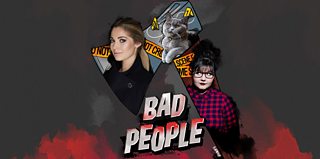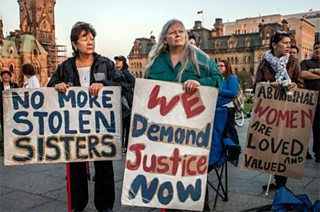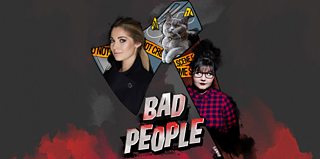The Most Dangerous Job in the World
Sarah de Vries wondered whether she’d be dead soon.
One day in December 1995, the Vancouver woman, who was a drug user and sex worker, wrote “Am I next?” in her diary. Following a growing string of disappearances of fellow sex workers from the area - it seemed increasingly likely that her days were numbered.
"Is he watching me now? Stalking me like a predator and its prey. Waiting, waiting for some perfect spot, time or my stupid mistake. How does one choose a victim?
"Good question. If I knew that, I would never get snuffed."
Sarah disappeared in April 1998, joining dozens of women - many of Indigenous heritages - who vanished from Downtown Vancouver over the course of ten years. Sadly, Sarah was far from the last.

Robert “Willie” Pickton was eventually convicted in 2007; the pig farmer was found guilty of the murders of six women. He claimed to have killed 49 women, but the court decided to drop 20 additional charges - considering it a waste of time and resources once he'd already been handed a life sentence.

Human remains [were] discovered in the meat-grinding machines that he used to create the pork products he went on to sell.
A forensic search of Pickton's farm eventually revealed the DNA of 33 women found in various buildings and freezers on his property. Human remains were even discovered in the meat-grinding machines that he used to create pork products to sell. Some of the bodies were fed to the pigs.
The years taken to arrest and convict Pickton plus the leniency in dropping the 20 additional charges leaves us to question the ways in which abuses and crimes against sex workers, as well as those against Canada's First Nation population are investigated. Would Pickton have gotten away with his crimes for so long had the victims come from different backgrounds?
In episodes 13 and 14 of Bad People, criminal psychologist Dr Julia Shaw and comedian Sofie Hagen, take a deep dive into what happened at the farm - chillingly nicknamed Piggy Palace - and what can be learned from these horrific crimes.
Missed clues
The first report of a woman going missing from Downtown Vancouver was in 1983, but cases began to spike in the mid-1990s. Women, mostly sex workers who belonged to the indigenous community, were vanishing from the neighbourhood. Serious suspicion of a serial killer started to rise among officers.

"If these women were from any other walk of life, there would be total outrage, search parties, volunteers, roadblocks."
Pickton was a known patron of sex workers in the area and would pick them up from the city and take them to his farm in the suburbs. On multiple occasions, authorities were tipped off to Pickton being involved in the disappearances; he was even charged for imprisoning and nearly fatally stabbing a sex worker in 1998. However the charges were ultimately dropped - despite the victim’s serious injuries, her status as a heroin addict meant that she was deemed an unreliable witness.
Though women who worked on the Vancouver city streets were going missing in alarming numbers, one of the cited reasons for the lack of urgency to find them was due to the assumption that these women were transient and could be expected to pick up and leave an area without warning. This theory weakened when it was discovered that, at the time of their disappearances, many of these women still maintained strong ties to family, friends and the local community.
In a retrospective piece, investigating detective Lorimer Shenher revealed his belief that the identity markers of these women played a key role in the neglectful handling of this case.
"If these women were from any other walk of life, there would be total outrage, search parties, volunteers, roadblocks," he explained.
"On a very deep level, a large segment of society and the policing community didn't feel these women were worth searching for and many people questioned whether they even wanted to be found."
It's possible that bias and stereotyping of the people in danger resulted in mishandling and lack of interest in the case. Vital cues were missed and the crimes continued.
The risk factor
A 2009 study of 237 female sex workers in Vancouver between 2006 and 2008 found that 57% had experienced gender-based violence in the 18 months prior. In 2004 the homicide rate for female sex workers in the United States was estimated to be 204 per 100,000.

"Sex workers who were getting into Pickton’s car knew that they weren’t coming back.”
At the time of the trial, Dr Shaw's then-teacher, Professor Stephen Hart, was contributing to the case and expressed that the women were wary of potential, serious harm when interacting with Pickton.
“When Stephen Hart would talk about it in class, he said that sex workers who were getting into Pickton’s car knew that they weren’t coming back,” she recalls.
With sex work outlawed in many countries, sex workers are left in a legally tenuous position - if they are committing a crime by simply having the job, what should they do when they themselves are the victim of a crime?
This fear of repercussions leads to underreporting of crimes against sex workers who fear the consequences and are deterred from seeking justice. Crimes go unreported and are able to happen again with little to deter attackers in the future.
Dr Shaw explains: “Criminalising sex work is almost certainly going to lead to more crime and abuse of individuals - and that is something that policymakers should deeply consider.”

"It’s worth looking at systemic failures of policing within countries that have indigenous populations."
The decriminalisation of sex work in New Zealand led to a reduction in violence, as sex workers were allowed to operate within the law, working with others in safe environments.
The Piggy Palace case also highlighted the routine marginalisation of Canada's indigenous population.
First Nation people have been brutally forced to denounce their heritage and assimilate to the dominant culture and abuses have been uncovered in residential schools for Indigenous people throughout the 20th Century. Indigenous people are disproportionately at risk for violent crime - with women being particularly vulnerable.
After decades of rising statistics, Prime Minister Justin Trudeau established the National Inquiry into . Months before the launch background into the inquiry reported that Indigenous women and girls represented 16% of all female homicides in Canada while constituting only 4% of the country’s female population.
These tragic numbers have been referred to as a Canadian genocide, but evidence of excessive levels of violence against Indigenous women is present in other countries too, including the United States and Australia. According to Dr Shaw, acknowledging this failure to protect all its people is necessary to portray a transparent picture of Canada on the world stage.
“Issues around the treatment of Indigenous populations by police need to be discussed further, and it’s worth looking at systemic failures of policing within countries that have indigenous populations, and seeing how we can tackle and address them,” she says.
Learning from the horror
For the victims of Willie Pickton, the nature of their work combined with their marginalised ethnicities likely contributed to inaction around their disappearances. The general acceptance of violence as a part of the job for sex workers potentially minimised the initial impact of these cases on society and their perception by the authorities.
The case calls to question the ways in which crimes against marginalised members of society are perceived and prosecuted and highlights the need to seek justice for all victims, not just those from privileged groups.



